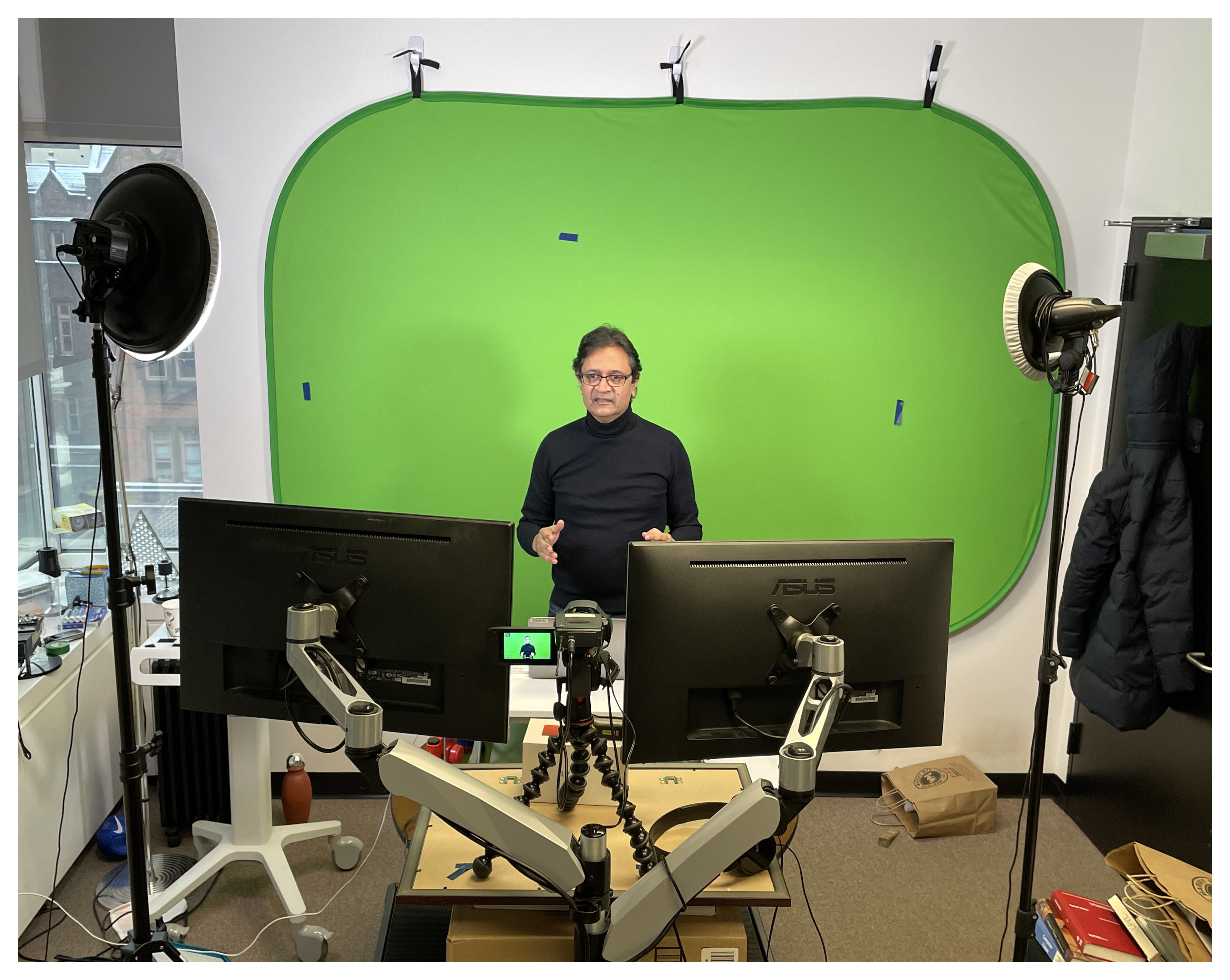About the Lectures
 Computer Vision is considered to be an advanced topic.
As such, it tends to be available only to students at well-established institutions of learning.
My interest in releasing these lectures is to make the material available to talented young minds who,
due to their circumstances, may not have access to courses on the topic.
For the benefit of those who have sketchy internet connectivity, I plan to also
make available lecture notes (pdfs), each one a monograph focused on a lecture topic.
Computer Vision is considered to be an advanced topic.
As such, it tends to be available only to students at well-established institutions of learning.
My interest in releasing these lectures is to make the material available to talented young minds who,
due to their circumstances, may not have access to courses on the topic.
For the benefit of those who have sketchy internet connectivity, I plan to also
make available lecture notes (pdfs), each one a monograph focused on a lecture topic.
The lectures focus on the physical and mathematical underpinnings of vision. When the project is completed there will be a total of about 140 videos. I have attempted to convey all the topics such that a science or engineering sophomore can follow the material with ease. In fact, I believe most of the videos should be accessible to a motivated high school student.
This lecture series evolved from a computer vision course I teach at Columbia - CS4731 (Computer Vision I: First Principles). This course is followed by CS4732 (Computer Vision II: Learning) taught by my colleague Carl Vondrick , and CS4995 (Deep Learning for Computer Vision) taught by my colleague Peter Belhumeur. Our hope is that the three courses together will prepare one to pursue a career in computer vision, either as a practitioner or a researcher.
Acknowledgements
Many years ago, I hired Guru Krishnan to help me turn my handwritten overhead slides into powerpoint slides and add new content at the same time. I would like to thank Guru for his devotion to the project and for putting up with my quibbles. His efforts laid the foundation and subsequently several of my students and postdocs contributed in small and big ways. In particular, I would like to thank Jinwei Gu, Neeraj Kumar, Changyin Zhou, Oliver Cossairt, Mohit Gupta, Austin Reiter, Daniel Miau, Avinash Nair, Parita Pooj, Henry Xu, and Robert Colgan.
Anne Fleming and Manushree Gangwar worked diligently to obtain copyright permissions for the visuals used in the lectures. The video recordings were done under unusual circumstances. Christian Palomares and TeShima Brennen edited the videos; Caroline Chen, Mathieu Marthe and Mike Introini helped with the website; and Jane Nisselson answered numerous questions related to production. Nisha Aggarwal transcribed the lectures to produce initial drafts of the lecture notes. Thanks to Columbia Video Network (CVN) for setting up a makeshift studio and for guidance on various aspects of the project. Finally, thanks to Barbara Oakley, Daphne Koller, and Soulaymane Kachani for their valuable advice.
Feedback
Comments regarding the lectures are welcome and can be sent to visionprinciples@gmail.com . I am, however, unable to promise timely responses to queries – I confess to being tardy when it comes to any form of digital communication.
Shree Nayar